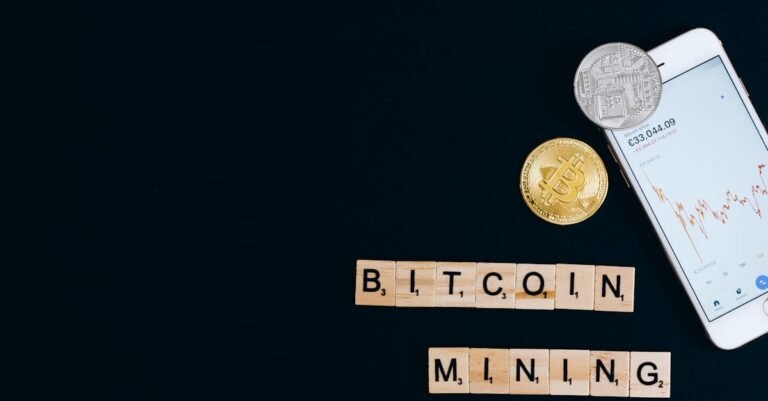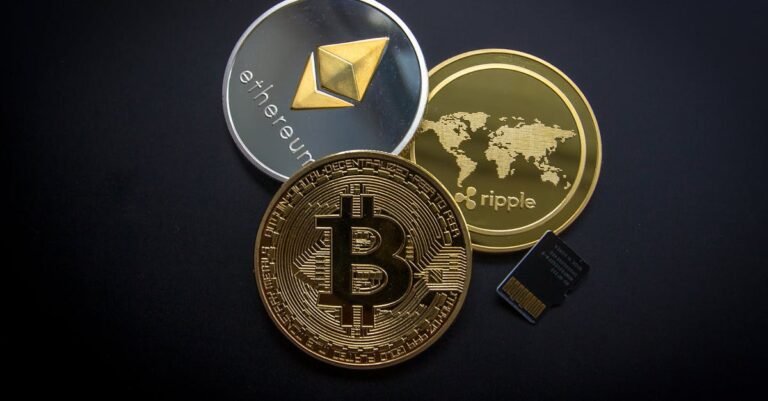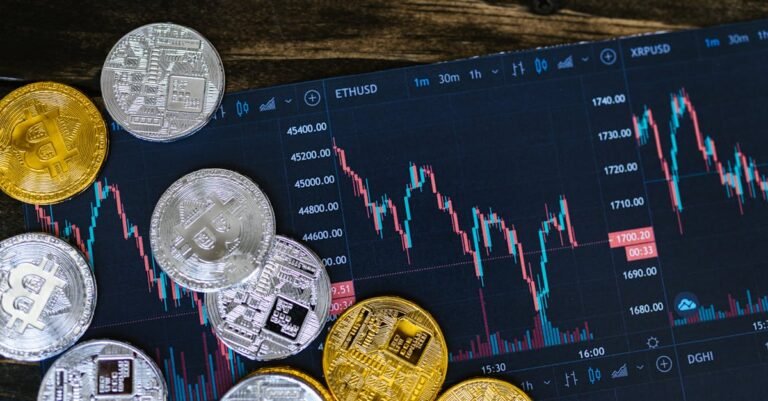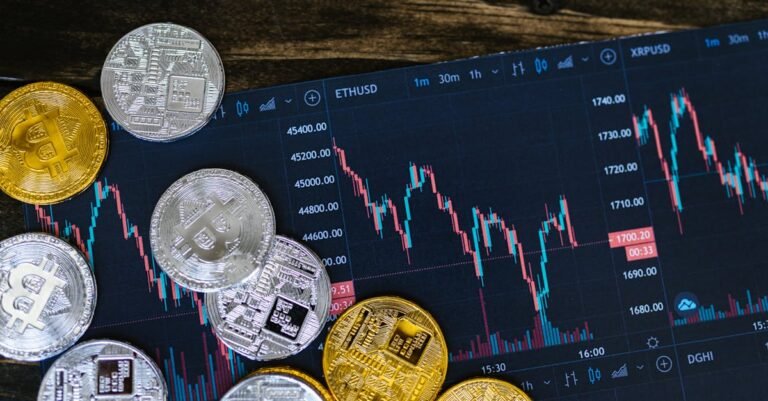Hey there, crypto adventurer! Ever feel like you’re standing at the edge of a vast, glittering ocean called the altcoin market? You see waves of opportunity, hear stories of incredible gains, but also whispers of hidden rocks and sudden storms. Finding those truly promising altcoins, the ones that might actually have a future beyond the hype, feels like searching for buried treasure. It’s exciting, maybe a little scary, but definitely possible if you have the right map and tools.
Let’s be real: navigating the world of altcoins isn’t just about luck. It’s about rolling up your sleeves and doing some proper digging. Forget chasing fleeting trends or basing decisions on a single tweet. We’re talking about becoming a crypto detective, piecing together clues to understand if a project has real substance. This isn’t about getting rich quick; it’s about making informed choices in a market known for its wild swings. So, grab your virtual shovel and magnifying glass. Let’s explore how to research promising altcoins together, breaking it down into simple, actionable steps. Think of this as your friendly guide, sharing insights like we’re chatting over coffee.
Understanding the Altcoin Landscape: Your Starting Point
Alright, first things first. What exactly *are* altcoins? Simply put, an altcoin is any cryptocurrency that isn’t Bitcoin. Bitcoin was the pioneer, the OG crypto. Everything that came after it falls under the “altcoin” umbrella. Think of Bitcoin as the first car ever invented. Altcoins are like all the different types of vehicles that came later – sedans, trucks, sports cars, electric vehicles, even flying cars (well, maybe not yet!). They all use similar underlying technology (blockchain, mostly), but they often aim to do different things, improve on Bitcoin’s limitations, or serve entirely new purposes.
Why is research so incredibly vital in this space? Because the altcoin market is like the Wild West of finance. It’s largely unregulated, incredibly volatile (meaning prices can shoot up or crash down very quickly), and unfortunately, home to many scams and projects with zero long term potential. Hype can send a coin’s price soaring temporarily, even if the project itself is fundamentally flawed. Without solid research, you’re essentially gambling, not investing. You might get lucky once or twice, but relying on luck is a terrible strategy. Thorough altcoin research helps you separate the potential gems from the worthless rocks. It allows you to understand *what* you’re potentially buying into, *why* it might have value, and *what* the risks are. It empowers you to make decisions based on evidence and analysis, rather than fear of missing out (FOMO) or unrealistic promises.
Before you even start looking at specific coins, it’s crucial to set realistic expectations. The stories of people turning a few hundred dollars into millions overnight are rare exceptions, not the rule. Many altcoins fail. Many lose significant value. Approaching this space with the expectation of guaranteed massive returns is a recipe for disappointment and potential financial loss. Think of it more like venture capital investing in early stage tech startups. High risk, potential for high reward, but also a high chance of failure. Your goal with research isn’t necessarily to find the *next* 1000x coin (though that would be nice!), but to identify projects with a solid foundation, a clear purpose, and a reasonable chance of growth and adoption over time. Focus on learning and understanding, and manage your risk accordingly. Never invest more than you can comfortably afford to lose.
Now, let’s talk categories. The altcoin universe isn’t just one big jumble. Coins usually fall into different categories based on their purpose or technology. Understanding these categories helps you narrow down your search and compare similar projects:
- Layer 1 Blockchains (L1s): These are the foundational blockchains, the base layer upon which other applications and tokens can be built. Think of them like the operating system for a computer (like Windows or macOS). Bitcoin is an L1. Ethereum is another massive L1. Newer L1s often aim to be faster, cheaper, or more scalable than older ones. Examples include Solana, Cardano, Avalanche, Polkadot. Researching an L1 involves understanding its consensus mechanism (how transactions are validated – like Proof of Work vs. Proof of Stake), its transaction speed and cost, its security, and its ecosystem of projects being built on top of it. A strong L1 needs developers building useful applications on it to thrive.
- Layer 2 Scaling Solutions (L2s): These are built *on top* of Layer 1 blockchains, primarily to help them scale, meaning handle more transactions faster and cheaper. Think of them like adding extra lanes to a highway (the L1) to reduce traffic congestion. They process transactions off the main chain but still rely on the L1 for security. This is a huge area of development, especially for Ethereum. Examples include Polygon (which acts as both an L1 sidechain and offers L2 solutions), Arbitrum, Optimism. When researching L2s, you look at which L1 they support, the technology they use (e.g., Rollups like Optimistic or ZK Rollups), how much activity they are processing, and the user experience.
- Decentralized Finance (DeFi): This category aims to recreate traditional financial services (like lending, borrowing, trading, insurance) but in a decentralized way, without intermediaries like banks. DeFi protocols are typically built on smart contract platforms like Ethereum or other L1s. Examples include Uniswap (decentralized exchange), Aave (lending/borrowing), MakerDAO (stablecoin issuance). Researching DeFi involves understanding the specific financial service it offers, the security of its smart contracts (audits are crucial!), the total value locked (TVL) in the protocol (a measure of adoption), and its governance model.
- Metaverse and Gaming (GameFi): These projects focus on building virtual worlds, games, or economies where users can interact, own digital assets (often as NFTs – Non Fungible Tokens), and sometimes earn cryptocurrency through playing (Play to Earn). Examples include Decentraland, The Sandbox, Axie Infinity. Research here involves looking at the quality of the virtual world or game, the user base, the in game economy design (is it sustainable?), the role of the token within the ecosystem, and partnerships with brands or gaming studios.
- Memecoins: These coins often start as jokes or are based on internet memes. They typically have little to no underlying utility or technological innovation. Their value is almost entirely driven by community hype, social media trends, and speculation. Examples include Dogecoin and Shiba Inu. Researching memecoins is tricky because fundamental analysis often doesn’t apply. It’s more about gauging community sentiment, social media presence, potential for viral marketing, and understanding the extremely high risk and volatility involved. Many memecoins fade away as quickly as they appear.
- Infrastructure & Oracles: This category includes projects that provide essential services for the blockchain ecosystem to function. Oracles, for example, provide real world data (like asset prices) to smart contracts on the blockchain. Examples include Chainlink (oracle network), Filecoin (decentralized storage), The Graph (data indexing). Research involves understanding the specific problem they solve, how critical their service is, their adoption rate by other projects, and their technological approach.
Understanding market cycles is also key. The crypto market tends to move in cycles – periods of massive growth and excitement (bull markets) followed by periods of significant decline and consolidation (bear markets). Altcoins are often much more volatile than Bitcoin during these cycles. In a bull market, many altcoins can see explosive gains, sometimes driven more by hype than fundamentals. In a bear market, many altcoins can lose 90% or more of their value, and some may never recover. Knowing where we might be in the broader market cycle can influence your research strategy. For example, during a bear market, you might focus more on projects with strong fundamentals and long term potential that have been heavily discounted, rather than chasing hyped coins.
So, where do you even begin to find altcoins to research? Good starting points include:
- Coin Aggregators: Websites like CoinMarketCap and CoinGecko list thousands of cryptocurrencies. You can filter them by category, market cap, price change, and other metrics. They provide basic information, price charts, links to project websites, and social media channels. Use these as a starting point for discovery, not as the sole basis for a decision.
- Crypto News Outlets: Reputable crypto news websites (like CoinDesk, Cointelegraph, The Block) often cover new project launches, funding rounds, and technological developments. This can help you identify interesting projects early on.
- Social Media & Communities: Platforms like Twitter, Reddit (especially specific crypto subreddits like r/CryptoCurrency or niche project subreddits), Discord, and Telegram are where a lot of crypto discussion happens. You can learn about new projects and gauge community sentiment. However, be extremely cautious – these platforms are also full of hype, misinformation, and scams. Always verify information from multiple reliable sources.
- Launchpads and IDO Platforms: These platforms specialize in launching new crypto projects (Initial DEX Offerings or IDOs). They sometimes have vetting processes, but diligence is still essential.
Remember, this initial phase is about casting a wide net based on understanding the different types of altcoins and where to look. The goal isn’t to pick winners yet, but to build a list of potential candidates that warrant a much deeper investigation. Think of it as panning for gold – you gather a lot of material first, then you start the careful process of sifting through it to find the valuable nuggets. This groundwork in understanding the broader cryptocurrency research landscape is fundamental before you start your detailed altcoin analysis.
The Deep Dive: Core Altcoin Research Pillars
Okay, you’ve navigated the vast ocean, understood the different currents, and maybe spotted a few interesting islands (potential altcoins) on the horizon. Now it’s time to put on your scuba gear and dive deep. This is where the real detective work begins. We need to meticulously examine the core aspects of each project. Think of this as investigating a potential investment property – you wouldn’t buy a house just because it looks nice from the outside, right? You’d check the foundations, the plumbing, the roof, the neighborhood. We’ll do the same for altcoins, focusing on three key pillars: the project’s vision and tech, its economic structure, and the people driving it.
Pillar 1: Project Vision and Technology
This pillar is all about understanding *what* the project aims to do and *how* it plans to do it. The single most important document here is usually the altcoin whitepaper. Think of the whitepaper as the project’s detailed blueprint or business plan. It should clearly explain the problem the project intends to solve, the proposed solution using blockchain technology, how the technology actually works (even if explained simply), the project’s roadmap (future plans and milestones), and often details about the token itself (though sometimes tokenomics has its own dedicated paper).
When reading a whitepaper, don’t just skim it. Look for clarity and substance. Ask yourself:
- What specific problem is this project trying to solve? Is it a real problem that needs a blockchain based solution? Or does the use of blockchain feel forced or unnecessary? A solution looking for a problem is often a red flag. For instance, a project aiming to decentralize cloud storage to make it cheaper and censorship resistant addresses a clear potential need. A project putting breakfast cereal orders on the blockchain might not.
- How does the proposed solution work? You don’t need to be a coding genius, but you should grasp the basic concept. Does the whitepaper explain the technology clearly, even in layman’s terms? Does it detail the consensus mechanism (if it’s a new blockchain), the smart contract logic, or the specific innovation it brings? Vague or overly technical language designed to confuse rather than clarify can be suspicious.
- Is the technology genuinely innovative or just a copycat? Does it offer a significant improvement over existing solutions (both blockchain and non blockchain)? Many projects are forks (copies with minor modifications) of existing ones. While not necessarily bad, they need a strong unique selling proposition to stand out.
- What is the project’s roadmap? A good roadmap outlines key development milestones, planned feature releases, and future goals with realistic timelines. It shows the team has a plan. Check if the team has been meeting past roadmap goals. Consistent delays or vague future plans are concerning. Look for specific, measurable, achievable, relevant, and time bound (SMART) goals. “World domination” is not a roadmap goal; “Launch mainnet Q3 2024” or “Integrate X feature by EOY” are.
- Who is the target audience or market? Does the whitepaper clearly define who will use this product or service? Understanding the target market helps assess the potential demand and adoption.
Beware of red flags in whitepapers:
- Excessive Buzzwords: Papers filled with jargon like “synergy,” “paradigm shift,” “revolutionize,” without clear substance.
- Vagueness: Lack of specific details on how the technology works or how goals will be achieved.
- Unrealistic Promises: Guarantees of high returns, claims of solving world hunger overnight, or roadmaps with impossibly fast timelines.
- Plagiarism: Some scam projects copy parts of whitepapers from legitimate projects. You can sometimes check for plagiarism using online tools or by searching for specific phrases.
- Poor Writing/Formatting: Numerous typos, grammatical errors, or unprofessional formatting can indicate a lack of care or resources.
Let’s imagine a hypothetical whitepaper section for “AquaCoin,” aiming to track water quality using IoT devices on a blockchain. A good section would explain *why* current water quality tracking is inefficient or untrustworthy (the problem). It would then detail *how* AquaCoin’s sensors record data, *how* that data is secured on their specific blockchain (maybe using a novel consensus method briefly explained), *how* users or authorities can access this transparent data, and *what* benefits this provides (e.g., real time alerts, verifiable reports for compliance). A bad section might just say “We leverage cutting edge blockchain synergy to revolutionize hydro informatics” without explaining anything concrete.
Beyond the whitepaper, explore the project’s website, blog posts, and any technical documentation available. Look for demos, proof of concepts, or a functioning testnet/mainnet. Does the technology actually exist and work, or is it just an idea? Understanding the core vision and the technological approach is fundamental. Without a solid foundation here, even great tokenomics or a strong team might not be enough for long term success. This deep dive into the project’s purpose and mechanics forms the first crucial part of your crypto project research.
Pillar 2: Tokenomics and Market Factors
So, the project has a potentially great idea and the tech seems plausible. Now, let’s talk money – or rather, the token’s role in the ecosystem. This is where tokenomics analysis comes in. Tokenomics is the study of the economic system of a cryptocurrency. It covers everything about the coin’s supply, demand, distribution, and utility. Think of it as the monetary policy and economic design for the project’s own little economy. Good tokenomics can create sustainable demand and value for a token, while bad tokenomics can doom it from the start.
Key aspects of tokenomics to investigate:
- Supply Dynamics:
- Circulating Supply: How many coins are currently available and trading on the market?
- Total Supply: How many coins exist right now (including locked ones)?
- Max Supply: Is there a maximum number of coins that will ever be created (like Bitcoin’s 21 million)? Or is it inflationary with no cap?
Understanding these numbers is crucial. A low circulating supply compared to a huge total/max supply might mean significant inflation or future sell pressure as locked tokens are released.
- Inflationary Tokens: New tokens are continuously created (e.g., through staking rewards or mining). This can encourage participation but also dilute value if supply outpaces demand. Look at the inflation rate – is it high or low? Does it decrease over time?
- Deflationary Tokens: The supply decreases over time, often through mechanisms like token burns (permanently removing tokens from circulation, often by sending them to an unusable address). This can potentially increase the value of remaining tokens if demand stays constant or grows.
Many projects use a mix of both. Understand the mechanics driving supply changes.
- Staking: Locking up tokens to help secure the network and earn rewards.
- Governance: Holding tokens gives voting rights on project proposals and future direction.
- Transaction Fees: Using the token to pay for gas fees or platform specific fees.
- Access: Needing the token to access certain features, services, or premium tiers within the platform.
- Medium of Exchange: Using the token to buy/sell goods or services within the project’s ecosystem (e.g., buying virtual land in a metaverse).
If a token has no clear utility beyond speculation, its long term value proposition is weak. Ask: If the price wasn’t expected to go up, would anyone still buy or hold this token?
- Public Sale: Sold to the general public.
- Private Sale/Investors: Sold to early backers, often at a lower price.
- Team & Advisors: Allocated to the founding team and advisors.
- Ecosystem/Treasury: Reserved for future development, marketing, community rewards, etc.
Look for fair distribution. If the team and early investors hold a massive percentage of the tokens, it could lead to significant sell pressure when their tokens unlock. Which brings us to…
Beyond tokenomics, consider broader market factors:
- Market Sector and Competition: What specific niche or industry is the project targeting (DeFi, gaming, supply chain, etc.)? Is this a large and growing market? Who are the main competitors, both within crypto and potentially from traditional industries? How does this project differentiate itself? Does it have a unique selling proposition (USP) or a significant advantage (e.g., better tech, lower fees, stronger partnerships)? A great project in a tiny or shrinking market, or one with dozens of identical competitors, faces an uphill battle. Perform an altcoin competition analysis.
- Market Capitalization (Market Cap): Calculated as (Current Price x Circulating Supply). This gives you an idea of the project’s current size and valuation in the market.
- Large Cap: Typically established projects, potentially lower growth potential but often considered less risky (though still risky!).
- Mid Cap: Room for significant growth but carry more risk than large caps.
- Small Cap/Micro Cap: Highest potential for explosive growth (10x, 100x) but also the highest risk of failure or scams.
Market cap helps you compare potential upside. A $10 million market cap coin has more room to grow to $100 million (a 10x return) than a $1 billion market cap coin does to reach $10 billion (also a 10x return), assuming the potential is there. Use market cap analysis to frame potential growth realistically.
- Trading Volume and Liquidity: Trading volume is the total value of the coin traded over a certain period (e.g., 24 hours). Liquidity refers to how easily you can buy or sell the coin without significantly impacting its price. High volume and good liquidity (often found on major exchanges) mean you can enter and exit positions more easily. Very low volume means it might be hard to sell when you want to, or a single large order could crash the price. Check which exchanges list the coin – listings on major, reputable exchanges often improve liquidity and visibility.
Analyzing the token’s economic design and its position within the broader market is crucial for assessing its potential for sustainable value accrual. A project might have amazing technology, but if the tokenomics are flawed or the market potential is limited, it may struggle to gain traction and value. This pillar requires careful examination of numbers, incentives, and market dynamics.
Pillar 3: The People and The Pulse
A brilliant idea and solid economics are essential, but a project is ultimately driven by people. Assessing the team behind the altcoin and the vibrancy of its community is the third critical pillar of your research. Even the best concept can fail with poor execution or lack of community support.
Start with the crypto team assessment:
- Who are they? Look for information about the core team members: founders, developers, marketers, advisors. Does the project website have a dedicated team section with names, photos, and backgrounds? Transparency is key.
- Experience and Expertise: What is their track record? Do they have relevant experience in blockchain, software development, finance, marketing, or the specific industry the project targets? Look them up on LinkedIn. Have they worked on successful projects before? Or have they been involved in failed or dubious projects? A team with proven experience is generally a positive sign.
- Transparency and Communication: Is the team open about their progress, challenges, and plans? Do they regularly communicate with the community through blog posts, social media updates, AMAs (Ask Me Anything sessions), or developer calls? Active and transparent communication builds trust.
- Advisors and Backers: Who are the project’s advisors or key investors (Venture Capital firms)? Reputable advisors and backers can lend credibility and provide valuable connections and resources. However, don’t be swayed solely by big names; verify their actual involvement.
- Anonymous Teams: Some projects, particularly in DeFi or privacy focused niches, have anonymous or pseudonymous teams. This isn’t automatically a red flag (Satoshi Nakamoto, Bitcoin’s creator, remains anonymous), but it does increase risk. If the team is anonymous, the project’s code, concept, and community become even more critical evaluation points. You need to trust the code and the mechanism design more heavily.
Next, gauge the “pulse” of the project – its community and development activity:
- Community Analysis: Explore the project’s main community channels:
- Discord/Telegram: Are these channels active? What is the tone of the conversation? Is it constructive discussion about the project, development, and use cases? Or is it mostly focused on price speculation (“wen moon?”, “pump it!”) and filled with hype or negativity? A healthy community engages in real discussion and supports the project’s goals.
- Reddit: Check for dedicated subreddits. Read through posts and comments to understand common questions, concerns, and the general sentiment.
- Twitter: Follow the project’s official account and key team members. How frequently do they post updates? How do they interact with followers? Also search for mentions of the coin ($Cashtag) to see what others are saying (but filter out noise and pure speculation).
Look for organic growth in community size and engagement, not just inflated numbers potentially driven by bots. A strong, engaged blockchain community can be a powerful asset for adoption and support.
- Developer Activity: Is the project actually being built and improved? This is crucial, especially for newer projects.
- GitHub: Most legitimate open source crypto projects have public code repositories on GitHub. You don’t need to read the code, but you can check for activity. Look at the ‘Commits’ section – are developers regularly pushing updates? How many developers are contributing? Consistent activity suggests ongoing development. Long periods of inactivity can be a major red flag.
- Project Updates: Does the team regularly publish development updates, detailing progress made, features released, bugs fixed, etc.? This shows accountability and forward momentum.
- Partnerships: Many projects announce partnerships. Critically evaluate them. Is the partnership meaningful and likely to drive adoption or provide real value? Or is it just a superficial announcement for marketing purposes? A partnership with a major company in the target industry is more significant than a vague “collaboration” with another small crypto project. Verify partnerships from both sides if possible.
The human element – the team’s competence and integrity, combined with the community’s engagement and the tangible evidence of ongoing development – provides crucial context. A dedicated team steering the ship, backed by an active community and consistent development progress, significantly increases a project’s chances of navigating the turbulent crypto waters successfully. Ignoring this pillar means missing a vital part of the picture in your promising altcoins research journey.
Tools, Tactics, and Staying Safe
Okay, detective, you’ve learned how to investigate the core pillars: the project’s vision, its economics, and the people behind it. Now, let’s equip you with the right tools for the job, discuss tactics for putting it all together, and most importantly, highlight how to navigate the potential minefield of risks and scams lurking in the altcoin world. Having the right crypto research tools and a cautious mindset is just as important as the research methodology itself.
Gearing Up: Your Research Toolkit
Think of these tools as your crypto detective kit. You don’t need to use all of them for every single coin, but knowing they exist and what they do is crucial.
- Coin Tracking & Data Aggregators:
- CoinMarketCap & CoinGecko: We mentioned these for discovery, but they offer much more for research. Dive deeper! Look at historical price charts, market cap charts, trading volume across different exchanges, token distribution details (they often summarize whitepaper info), links to official websites, social channels, and block explorers. They also categorize coins, which helps in finding competitors. Explore all the tabs and data points they provide – it’s often more than just the price.
- Blockchain Explorers: These are like search engines for specific blockchains. They allow you to see *everything* happening on the chain transparently. Examples include:
- Etherscan: For Ethereum and ERC-20 tokens.
- BscScan: For Binance Smart Chain (BSC) and BEP-20 tokens.
- Solscan: For Solana and its tokens.
- PolygonScan: For the Polygon network.
(Most blockchains have their own explorer).
How to use them (simply): You can paste in a project’s contract address (usually found on CoinMarketCap/CoinGecko or the official website) to verify it’s the correct one. You can look at the ‘Holders’ tab to see how the tokens are distributed – are a few wallets holding a massive percentage? (This could be a risk). You can check recent transactions to see activity. You can sometimes view the smart contract code itself (though understanding it requires technical skill). Learning basic navigation on a blockchain explorer tutorial site or video can be very insightful. It provides raw, unfiltered data about token movements and holdings.
- LunarCrush, Santiment: These platforms gather data from social media, news sites, and other online sources to gauge sentiment (positive/negative feeling), social media engagement levels, and identify trending coins. They can offer clues about market perception and buzz. However, use them cautiously – sentiment can be easily manipulated, and hype doesn’t equal fundamental value. They are one piece of the puzzle, not the whole picture.
- CoinDesk, Cointelegraph, The Block, Decrypt: Stay updated on general crypto news and specific project developments through reputable crypto journalism outlets.
- Project Specific Channels: Follow the official blog, Twitter account, and Discord announcements channel for the projects you are researching. This is the primary source for updates, roadmap progress, and partnership news.
Always cross reference information and be wary of overly biased or promotional content, even from official sources. Use these crypto news sources critically.
- TradingView: This is a powerful tool for viewing price charts with various indicators. While deep technical analysis (predicting future price based on past patterns) is a complex skill, basic charting can be helpful for research. You can:
- Visualize long term price trends.
- Identify key support and resistance levels (price levels where buying or selling pressure has historically been strong).
- Look at trading volume alongside price moves (e.g., does a price increase have strong volume behind it, suggesting conviction?).
Keep it simple initially. Understanding the basic price history and volume context can add another layer to your analysis. Don’t rely solely on charts, but don’t ignore them either. Consider them as part of your cryptocurrency analysis tools.
Using these tools effectively involves synthesizing information from multiple sources. Don’t just rely on CoinGecko data; cross reference it with the project’s whitepaper and a block explorer. Don’t just trust social sentiment; verify claims with actual development activity on GitHub and official announcements.
Navigating the Minefield: Spotting Red Flags and Scams
The altcoin space is, unfortunately, rife with scams and projects designed solely to enrich their creators at the expense of uninformed investors. Learning to spot the warning signs is crucial for protecting yourself. Here are some common altcoin red flags and crypto scams to watch out for:
- Unrealistic Promises & Aggressive Hype: Be extremely wary of projects promising “guaranteed returns,” “risk free profits,” or using excessive hype language (“Next 1000x Gem!”, “Get Rich Quick!”). Legitimate projects focus on technology and utility, not impossible financial guarantees. If it sounds too good to be true, it almost certainly is.
- Anonymous Teams + Lack of Transparency: While not always a deal breaker (as discussed), an anonymous team combined with vague communication, no public code repository (GitHub), or refusal to answer tough questions is a major red flag. Ask yourself: why are they hiding?
- Weak or Non Existent Utility/Use Case: The token exists only to be bought and sold, with no real function within a working product or ecosystem. Its only “purpose” is speculation. These often collapse once the initial hype fades.
- Poor Quality Website & Whitepaper: Typos, grammatical errors, plagiarized content, broken links, or a generally unprofessional look can indicate a lack of effort, resources, or legitimacy.
- Pump and Dump Schemes: Groups often coordinate (sometimes openly on social media, sometimes secretly) to rapidly buy a low volume coin to inflate its price (“pump”), attract FOMO buyers, and then sell off their holdings (“dump”) at the peak, causing the price to crash and leaving later buyers with significant losses. Be cautious of coins experiencing sudden, massive price spikes with no clear news or fundamental reason, especially if accompanied by coordinated online shilling.
- Fake Partnerships & Endorsements: Projects might claim partnerships with major companies or endorsements from celebrities that are untrue or misleading. Always try to verify significant partnership claims directly from the supposed partner’s side.
- Minimal Development Activity: Checking GitHub (as mentioned in Pillar 3) is vital. If a project claims to be building revolutionary tech but has little to no code commits or developer activity for extended periods, it’s likely stagnant or potentially a facade.
- Tokenomics Skewed Towards Insiders: A very high percentage of tokens allocated to the team and private investors with short vesting schedules can signal a potential cash grab.
- Pressure to Buy Quickly (FOMO): Scammers often create artificial urgency, telling you this is a “limited time opportunity” or that you need to “get in before it takes off!” This is designed to make you act impulsively without proper research. Resist the Fear Of Missing Out. There will always be other opportunities. Take your time.
The single best defense against scams is thorough research and critical thinking. Don’t trust, verify. Question everything. If something feels off, it probably is. Learning how to avoid crypto scams is a continuous process of vigilance.
Building Your Strategy and Staying Sharp
Effective altcoin research isn’t a one off task; it’s an ongoing process. Here’s how to structure your approach and stay informed:
- Create a Research Checklist: Based on the pillars and red flags discussed, create a checklist of items to investigate for every potential altcoin. This ensures you cover all the key areas consistently (e.g., Check Whitepaper, Analyze Tokenomics, Verify Team, Check GitHub, Assess Community Sentiment, Look for Red Flags, etc.).
- Document Your Findings: Keep notes! Whether it’s a spreadsheet, a document, or a dedicated notebook, write down your findings for each project. Note the pros, cons, risks, and your overall conclusion. This helps you compare projects objectively and track your reasoning over time.
- Continuous Learning: The crypto space evolves rapidly. New technologies, trends, and regulations emerge constantly. Dedicate time to learning about the broader market, new blockchain concepts (like ZK proofs, LSTs, etc.), and evolving narratives. Follow trusted educators and analysts.
- Follow Project Updates: Once you’ve invested in a project (or are seriously considering it), actively follow its progress. Read official announcements, join community calls if possible, and monitor if they are meeting their roadmap goals. A great project today could falter tomorrow if execution lags.
- Consider Diversification (Risk Management): While this isn’t investment advice, it’s generally unwise to put all your capital into a single altcoin, no matter how promising your research suggests it is. Spreading your investments across several well researched projects can help mitigate risk.
- The Golden Rule: Never invest more money than you can afford to lose. Altcoins are inherently risky assets. Even with the best research, projects can fail, markets can crash, and unforeseen events can occur. Ensure that any money you put into altcoins won’t impact your ability to pay bills or meet essential financial needs.
Building a disciplined altcoin investment strategy based on research takes time and effort, but it significantly increases your chances of navigating this exciting but challenging market more successfully and safely. Stay curious, stay critical, and stay safe.
Wrapping It All Up: Your Research Compass
Whew! We’ve covered a lot of ground, haven’t we? From understanding the vast altcoin universe and the absolute necessity of research, to diving deep into project fundamentals like the whitepaper, tokenomics, and the team, all the way to equipping yourself with tools and learning to spot those dangerous red flags. Researching promising altcoins isn’t about finding a magic formula, but about developing a methodical process, asking the right questions, and applying critical thinking.
Remember the key steps:
- Start Broad: Understand what altcoins are, the different categories, and where to initially look for potential candidates.
- Dive Deep: Meticulously investigate the project’s vision and tech (whitepaper!), its economic engine (tokenomics!), and the people driving it (team, community, developers!).
- Gear Up & Stay Safe: Utilize research tools effectively (aggregators, explorers, news sources) and be constantly vigilant for red flags and scams.
- Build a Process: Use checklists, document findings, keep learning, follow updates, and always practice sound risk management.
The world of altcoins is undeniably exciting, filled with innovation and potential. By committing to thorough, ongoing research, you move from being a passive speculator tossed around by market waves to an informed participant charting your own course. It takes effort, diligence, and a healthy dose of skepticism, but the understanding and confidence you gain are invaluable.
So, don’t just stand on the shore wondering. Take these insights, start building your research process, and begin your exploration. The crypto ocean awaits, and while there are risks, armed with knowledge, you’re much better equipped to find those promising currents.
Ready to start your research journey? What are your favorite tools or research tips? Share them in the comments below – let’s learn from each other! And if you found this guide helpful, consider subscribing for more insights into the world of crypto.









